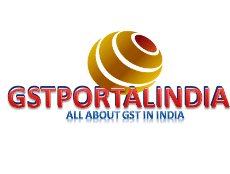GSTR 9A- In this article, you will able to understand Definition, Eligibility & Updated Due dates and more.
Contents of this post
1. What is GSTR 9A?
The GSTR-9A is an annual return for each financial year, the registered taxpayers who have opted for composition scheme for any period during the said financial year, have to file it once. In this annual return, The taxpayers will have to furnish details regarding outward supplies, inward supplies, taxes paid, any refund claimed or demand created or input tax credit availed or reversed due to opting out or opting into composition scheme.
2. Is it mandatory to file the GSTR-9A return?
Yes, it’s mandatory to file the GSTR9A return for taxpayers who have opted for composition scheme for any period during the said financial year. But following persons no need to file Form GSTR9A:
- A regular taxpayer who have not opted in composition scheme for any period during the financial year
- Non-resident taxable persons
- Input service distributor
- Casual Taxable Person
- Persons required to Deduct Tax at Source u/s 51
- Persons required to Collect Tax at Source u/s 52
3. Who needs to file the GSTR-9A (Annual Return)?
All taxpayers registered under the composition scheme under GST, for any period during the financial year, need to file Form GSTR-9A. This will include a taxpayer such as
1.who have opted for composition scheme since registration and have never opted out subsequently; and
2.who have opted in for composition scheme any time during the financial year; and
3.who have opted in for composition but subsequently opted out any time during the year.
4. What is the due date for the GSTR-9A return?
The due date for filing Form GSTR9A for a particular financial year is 31st December of the subsequent financial year or as extended by Government through notification from time to time. The Government through notification can extend the date of filing return in Form GSTR9A.
For example- extended due date for the F.Y-17-18 is 31st Jan 2020 and F.Y-18-19 is 31st march 2020.
5. Can I file nil Form GSTR-9A?
Yes, You can file “NIL” GSTR-9A RETURN, but if you have
- Not made any outward supply (commonly known as a sale); And
- Not received any inward supplies (commonly known as a purchase) of goods/services; And
- No liability of any kind; And
- Not claimed any Credit during the Financial Year; And
- Not received any order creating demand; And
- Not claimed any refund.
- Not received any order creating demand; AND
- There is no late fee need to pay etc. Filing Form GSTR-9A
6. What are other FAQS on GSTR 9A eligibility?
There are many other faqs or questions on eligibility of GSTR9A (Annual Return) as per issues on filing GSTR9A on GST PORTAL such as-
What are the pre-conditions for filing Form GSTR-9A?
Pre-conditions for filing of Form GSTR9A are:
- A taxpayer should register in the relevant financial year and opt for a composition scheme for even a day during the financial year.
- A taxpayer has filed all applicable returns i.e. Form GSTR-4, a quarterly return of the relevant financial year, before filing the Annual Return.
I opted out of the composition scheme in the financial year. Do I need to file Form GSTR-9A?
Taxpayers who have opted out from the composition scheme need to file Form GSTR9A for the period during which they were registered under the composition levy scheme.
I got my registration canceled in the financial year. Can I file Form GSTR-9A?
The annual return can be filed even if the taxpayer has got his registration canceled during the said financial year.
I am a regular/ normal taxpayer for the part period and composition taxpayer for the part period during the financial year. Do I need to file Form GSTR-9 or Form GSTR9A?
You are to file both annual return in Form GSTR-9 and Form GSTR-9A.
The period during which the taxpayer remained as composition taxpayer, Form GSTR9A has to file. And, for a period for which the taxpayer registered as a normal taxpayer, Form GSTR-9 has to file.
For example: If the taxpayer was registered as a normal taxpayer during the period 1st April 2020 to 31st Sept 2020, then for such period Form GSTR-9 is required to be filed. And, if the taxpayer had opted for a Composition scheme from 1st Oct 2020 to 31st Mar 2021, then Form GSTR9A is required to be filed for such period i.e. (Oct-March).
Both Form GSTR-9 and Form GSTR9A for the respective period have to file for FY 2020-21, in such cases.
Can I edit auto-populated details in Form GSTR9A?
Yes, you can edit auto-populated data in form GSTR9A except for the tax paid column of Table no. 9. The outward supplies details can be edited in order to indicate actual supplies made and not merely outward supplies indicated in the Returns.
Can taxpayers revise Form GSTR9A return after filing?
No, Taxpayers cannot revise Form GSTR9A return after filing.
What happens after Form GSTR-9A is filed?
After Form GSTR9A is filed:
- ARN will generate on the successful filing of the return in Form GSTR-9A.
- An SMS and an email are sent to the taxpayer on his registered mobile and email id.
- Electronic Cash Ledger and Electronic Liability Register Part-I will update on successful set-off of liabilities (Late fee only).
- Filed form GSTR-9A will be available for view/download in PDF and Excel format.
- How to login Udyam Registration Portal?
- Delhi EWS/DG Admission for 24-25, Eligibility, Dates
- Open cheque meaning, example, fillup, image & benefits
- Post dated cheque example, meaning, fillup & benefits
- Ante dated cheque meaning, example, filling & benefits

An Accountant, GSTP, GST blogger, Website Creator, SEO Builder & Co-founder of the website https://gstportalindia.in for the help of GST Taxpayers of India. Having a perfect accounting experience of more than 10 years in a Private Ltd Company.
